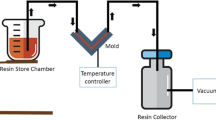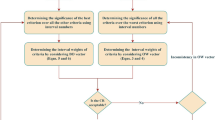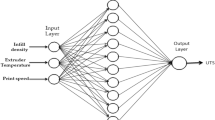Abstract
In the semiconductor manufacturing industry, epoxy dispensing is a popular process commonly used in die-bonding as well as in microchip encapsulation for electronic packaging. Modeling the epoxy dispensing process is important because it enables us to understand the process behavior, as well as determine the optimum operating conditions of the process for a high yield, low cost, and robust operation. Previous studies of epoxy dispensing have mainly focused on the development of analytical models. However, an analytical model for epoxy dispensing is difficult to develop because of its complex behavior and high degree of uncertainty associated with the process in a real-world environment. Previous studies of modeling the epoxy dispensing process have not addressed the development of explicit models involving high-order and interaction terms, as well as fuzziness between process parameters. In this paper, a hybrid fuzzy regression (HFR) method integrating fuzzy regression with genetic programming is proposed to make up the deficiency. Two process models are generated for the two quality characteristics of the process, encapsulation weight and encapsulation thickness based on the HFR, respectively. Validation tests are performed. The performance of the models developed based on the HFR outperforms the performance of those based on statistical regression and fuzzy regression.
Similar content being viewed by others
References
Chen DX (2002) Modeling and off-line control of fluid dispensing for electronics packaging, Ph.D. thesis, The University of Saskatchewan
Chen XB, Ke H (2006) Effect of fluid properties on dispensing processes for electronic packaging. IEEE Trans on Electron Packag Manuf 29(2):75–82
Li HX, Tso SK, Deng H (2001) A concept approach to integrate design and control for the epoxy dispensing process. Int J Adv Manuf Technol 17:677–682
Hong YP, Li HX (2003) Comparative study of fluid dispensing modeling. IEEE Trans on Electron Packag Manuf 26(4):273–280
Li J, Deng G (2004) Technology development and basic theory study of fluid dispensing—a review. Proceedings of the Sixth IEEE Components, Packaging and Manufacturing Technology Conference 198–205
Chen XB (2009) Modeling and control of fluid dispensing processes: a state-of-the-art review. Int J Adv Manuf Technol 43:276–286
Kwong CK, Chan KY, Wong H (2007) An empirical approach to modeling fluid dispensing for electronic packaging. Int J Adv Manuf Technol 34(1–2):111–121
Kwong CK, Chan KY, Wong H (2008) Takagi-Sugeno neural fuzzy modeling approach to fluid dispensing for electronic packaging. Expert Syst Appl 34(3):2111–2119
Takagi T, Sugeno M (1985) Fuzzy identification of systems and its application to modeling and control. IEEE Trans Syst Man Cybern 15(1):116–132
Azadeh A, Seraj O, Saberi M (2011) An integrated fuzzy regression–analysis of variance algorithm for improvement of electricity consumption estimation in uncertain environments. Int J Adv Manuf Technol 53:645–660
Sener Z, Karsak EE (2010) A decision model for setting target levels in quality function development using nonlinear programming-based fuzzy regression and optimization. Int J Adv Manuf Technol 48:1173–1184
Ip KW, Kwong CK, Bai H, Tsim YC (2003) Process modelling of epoxy dispensing for microchip encapsulation using fuzzy linear regression with fuzzy intervals. Int J of Adv Manuf Technol 22:417–423
Koza J (1992) Genetic programming: on the programming of computers by means of natural evolution. MIT Press, Cambridge
Koza J (1994) Genetic programming II: automatic discovery of reusable programs. MIT Press, Cambridge
Lakshminarayanan S, Fujii H, Grosman B, Dassau E, Lewin DR (2000) New product design via analysis of historical databases. Comput Chem Eng 24:671–676
Brezocnik M, Gusel L (2004) Predicting stress distribution in cold formed material with genetic programming. Int J Adv Manuf Technol 23:467–474
Kok M, Kanca E, Eyercioglu O (2010) Prediction of surface roughness in abrasive waterjet machining of particle reinforced MMCs using genetic expression programming. Int J Adv Manuf Tech 55:955–968
Madar J, Abonyi J, Szeifert F (2005) Genetic programming for the identification of nonlinear input–output models. Ind Eng Chem Res 44:3178–3186
Kwong CK, Chan KY (2005) Process modeling and optimization of epoxy dispensing using volumetric pump. A progress report to ASM Assembly Automation Ltd.
Tanaka H, Watada J (1988) Possibilistic linear systems and their application to the linear regression model. Fuzzy Set Syst 272:275–289
Willis MJ, Hiden H, Hinchliffe M, McKay B, Barton GW (1997) Systems modeling using genetic programming. Comput Chem Eng 21:1161–1166
Goldberg DE (1989) Genetic algorithms in search, optimization and machine learning. Addison-Wesley, Boston
Stone M (1974) Cross validation choice and assessment of statistical predictions. J R Stat Soc 36:111–147
Tanaka H, Uejima S, Asai K (1982) Linear regression analysis with fuzzy model. IEEE Trans Syst Man Cybern 12:903–907
Author information
Authors and Affiliations
Corresponding author
Appendix
Appendix
Tanaka et al. [24] formulated the fuzzy regression problem as the following linear programming problem:
where M is the number of data sets used for training the epoxy dispensing model, and \( x_{{_j}}^{\prime }(i) \) is the i-th data set with respect to the j-th transformed variable of the epoxy dispensing model, subject to:
J in Eq. (18) is the total fuzziness of the epoxy dispensing model. The value of h in Eqs. (19) and (20) is between 0 and 1. It is referred to as a fitting degree of the epoxy dispensing model to the given data sets and is subjectively chosen by decision makers. Constraints (19) and (20) restrict that the observation of the i-th data set y(i) has at least h degree of belonging to \( \widetilde{y}(i) \) as \( {\mu_{{\widetilde{y}(i)}}}\left( {y(i)} \right) \geqslant h\left( {i = 1,2, \cdots, M} \right) \). Therefore, the objective of solving the linear programming problem [Eqs. (18), (19), (20), (21), and (22)] was to determine the fuzzy nonlinear parameters \( \widetilde{A}_j^{\prime } = \left( {c_j^{\prime },\alpha_j^{\prime }} \right) \) such that the total vagueness J is minimized subject to \( {\mu_{{\widetilde{y}(i)}}}\left( {y(i)} \right) \geqslant h\;\left( {i = 1,\;\;2, \cdots, M} \right) \). Therefore, the intervals of the epoxy dispensing process derived from the approach of Tanaka et al. [24] were determined by all the collected data sets and the value h. With the advice from the company supporting this research [18], h = 0.1 was used.
Rights and permissions
About this article
Cite this article
Chan, K.Y., Kwong, C.K. Modeling of epoxy dispensing process using a hybrid fuzzy regression approach. Int J Adv Manuf Technol 65, 589–600 (2013). https://doi.org/10.1007/s00170-012-4202-4
Received:
Accepted:
Published:
Issue Date:
DOI: https://doi.org/10.1007/s00170-012-4202-4




